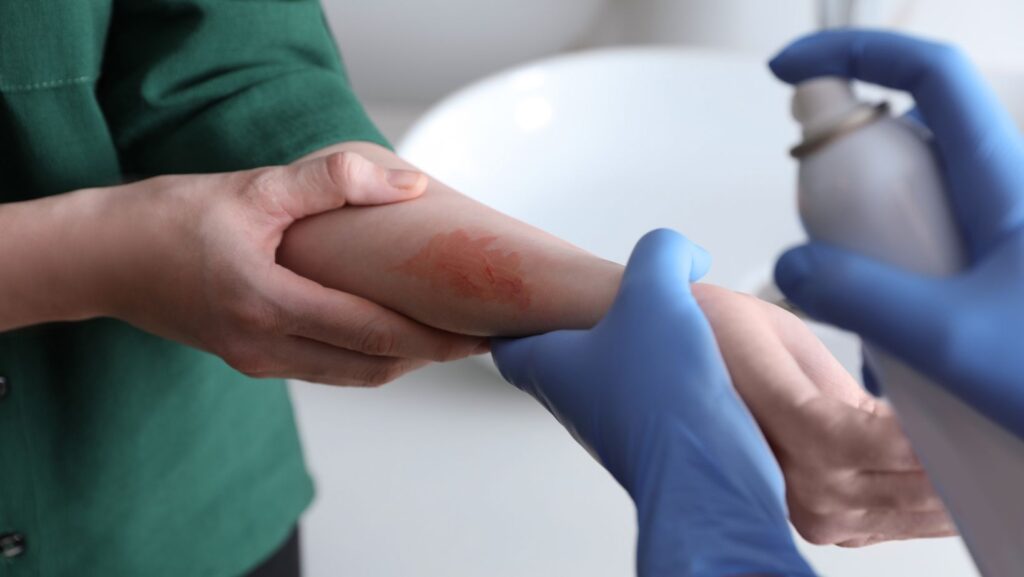
Atlanta is a busy city that flourishes on its diverse population, strong industries, and lively culture, attracting people from all backgrounds.
However, this dynamic environment also poses the risk of accidents, including burn injuries, that can occur both at home and in the workplace. The first step towards prevention is to understand these risks, which is crucial for ensuring the safety and well-being of the community.
Knowing where to turn for guidance and support is crucial in a city where safety and legal advocacy converge. Atlanta’s premier burn injury law firm stands at the forefront of this endeavor, offering expertise and resources to those affected by burn injuries.
Their commitment to prevention, education, and legal assistance forms a cornerstone of community safety efforts, aiming to reduce the incidence of such traumatic experiences.
Understanding Atlanta’s Burn Injury Landscape
Atlanta’s vibrant city life, combined with its mix of residential, commercial, and industrial areas, presents unique challenges in preventing burn injuries. The city’s fast-paced growth has seen an increase in the number of homes, workplaces, and recreational spaces—each with its inherent risks. Identifying these environments and understanding the specific dangers they pose is the first step in crafting targeted prevention strategies.
By mapping out high-risk zones and activities, safety advocates and legal professionals can better allocate resources and educational efforts.
Moreover, the diverse climate of Atlanta contributes to seasonal variations in burn injury risks. From electrical heaters in the winter to outdoor grills in the summer, each season brings its set of challenges that residents must handle.
Recognizing these patterns allows for timely safety campaigns and interventions, ensuring that prevention measures are both effective and relevant to the current risks faced by the community.
The Role of Education in Burn Prevention
Education is key to preventing burn injuries, serving as a foundation for creating a safer community in Atlanta. Through a variety of initiatives, residents can gain valuable knowledge on how to avoid these incidents and how to act should they occur. Below is an overview of how education can make a significant impact:

- Workshops and Seminars: Hosting educational events in schools, community centers, and workplaces on fire safety, emergency response techniques, and the correct use of electrical and cooking equipment.
- Reduction of Burn Incidents: Educational efforts aim to decrease the likelihood of burns and prepare individuals to respond effectively in case of accidents.
- Targeted Programs for Specific Demographics: Offering tailored programs for children, elderly residents, and industrial workers to address the unique risks each group faces, from kitchen scalds to chemical and electrical burns.
Innovations in Burn Injury Prevention and Care
Advancements in technology and healthcare offer new opportunities for preventing and treating burn injuries in Atlanta. From fire-resistant materials used in clothing and building construction to sophisticated alarm and sprinkler systems, innovation plays a key role in enhancing safety.
The development of mobile apps that provide safety tips, first-aid procedures, and emergency contact information puts lifesaving resources at the fingertips of Atlanta’s residents.
On the medical front, breakthroughs in burn care, including regenerative medicine and improved grafting techniques, promise better outcomes for burn victims. Atlanta’s healthcare providers and research institutions are at the forefront of these innovations, ensuring that those affected by burns have access to the latest treatments.
Legal Advocacy
Legal support is indispensable for burn injury victims in Atlanta, providing a pathway to compensation and justice. Specialized personal injury lawyers offer the expertise needed to manage the complex landscape of personal injury claims, ensuring that victims receive the financial support necessary for their recovery and rehabilitation.
This support extends beyond just medical expenses, covering lost wages, pain and suffering, and other damages related to the injury.
Furthermore, legal advocacy plays a crucial role in holding responsible parties accountable, whether it’s an individual, a corporation, or a public entity.
By pursuing legal action in cases of negligence or malpractice, attorneys not only secure justice for their clients but also drive improvements in safety standards and practices.
Community Engagement and Support Networks
The fight against burn injuries is a collective effort that requires the involvement of the entire Atlanta community. Support networks, including survivor groups and advocacy organizations, provide crucial emotional and practical assistance to individuals and families affected by burn injuries.
These groups offer a platform for sharing experiences, coping strategies, and resources, fostering a sense of solidarity and resilience among survivors.
Engagement initiatives, such as community-led safety fairs and awareness campaigns, also play a vital role in prevention efforts. By bringing together residents, safety professionals, healthcare providers, and legal experts, these events promote a culture of safety and preparedness.

Community engagement not only raises awareness but also empowers citizens to take proactive steps in safeguarding themselves and their loved ones against the risk of burns.
Wrapping Up
Effective policies and regulations are the backbone of burn injury prevention in Atlanta. Stricter safety codes for buildings and workplaces, rigorous enforcement of fire safety standards, and mandatory safety education in schools are examples of policy measures that can significantly reduce burn risks.
Government agencies, in collaboration with safety experts and legal professionals, must continually review and update these regulations to address emerging risks and incorporate advancements in safety technology.
Public policy initiatives can also promote the development and adoption of safer products, from household appliances to industrial equipment.
Incentivizing companies to prioritize safety in their designs and manufacturing processes not only benefits consumers but also reduces the overall burden of burn injuries on the healthcare system and the economy.
Through a combination of robust legislation and public-private partnerships, Atlanta can achieve a safer environment for all its residents, minimizing the occurrence and impact of burn injuries.












